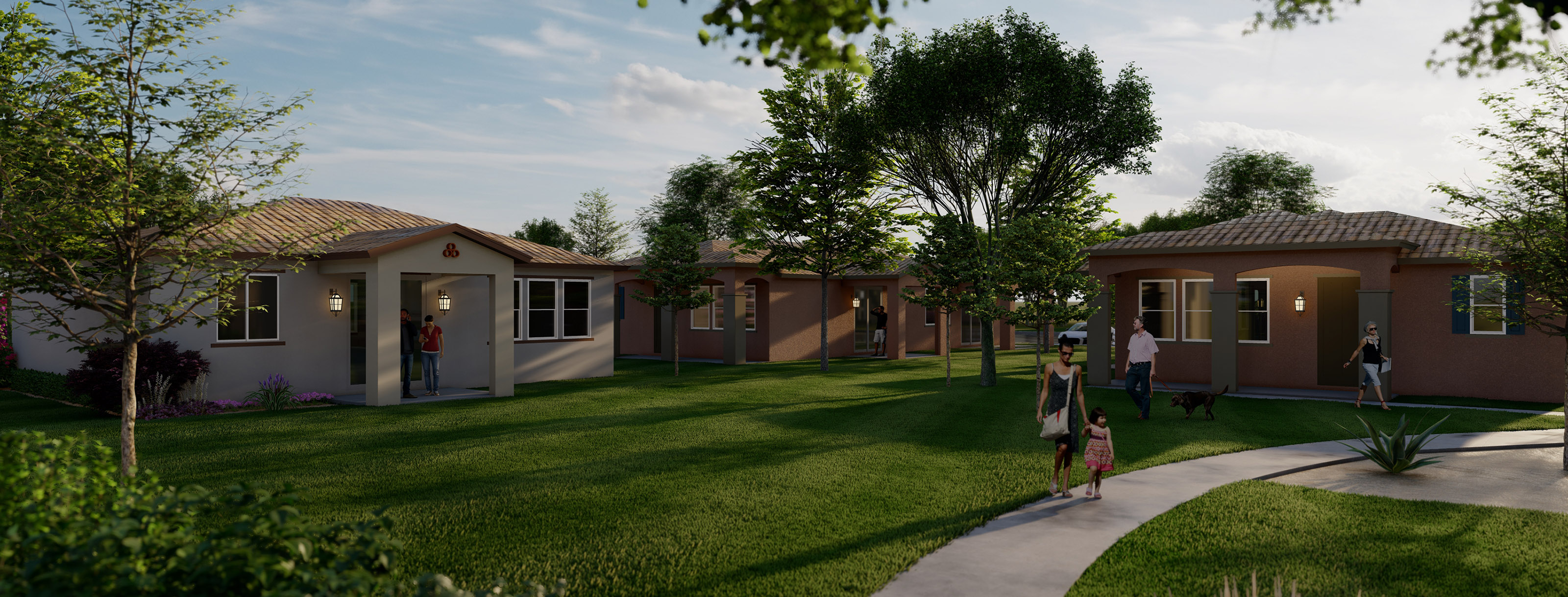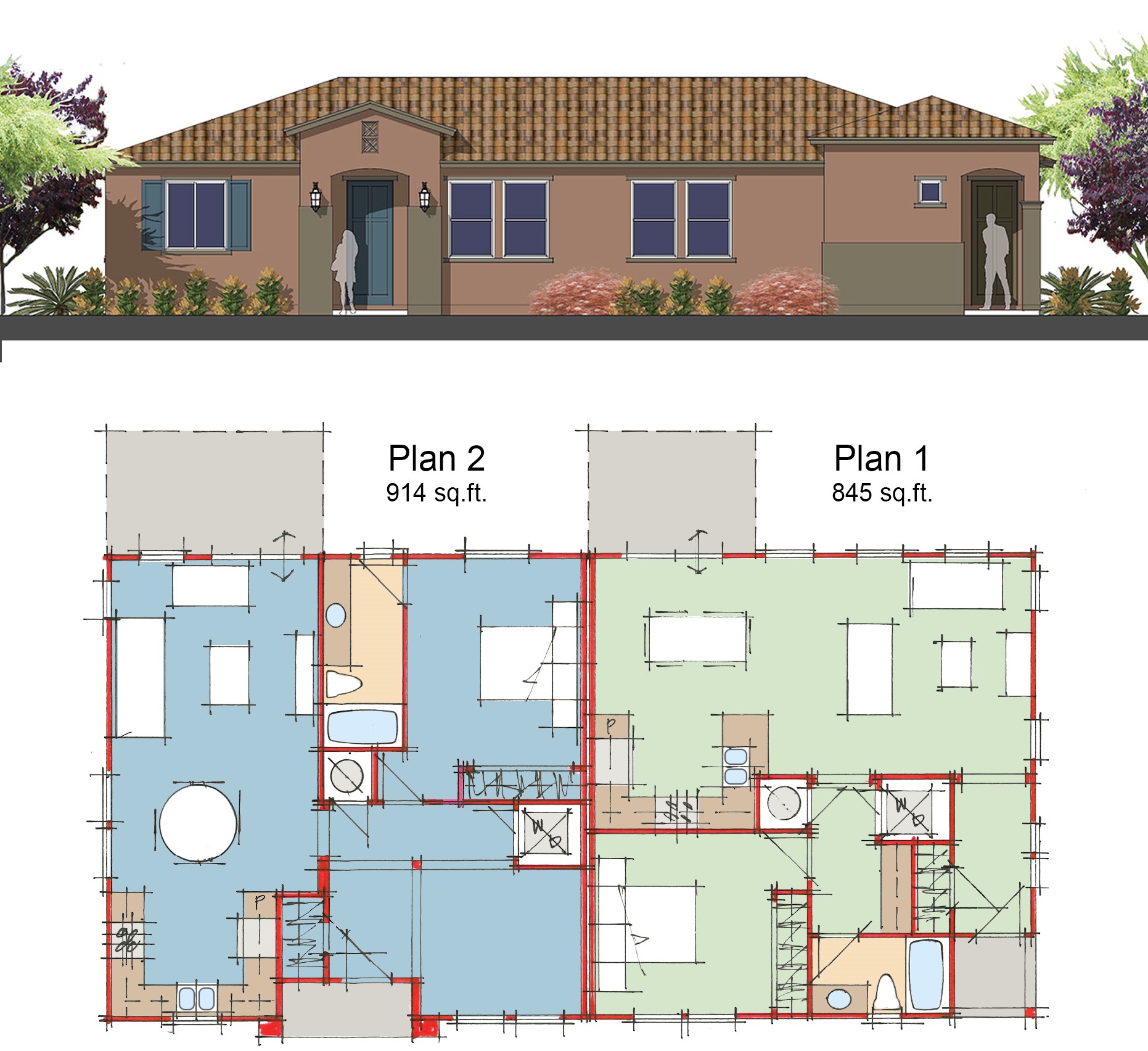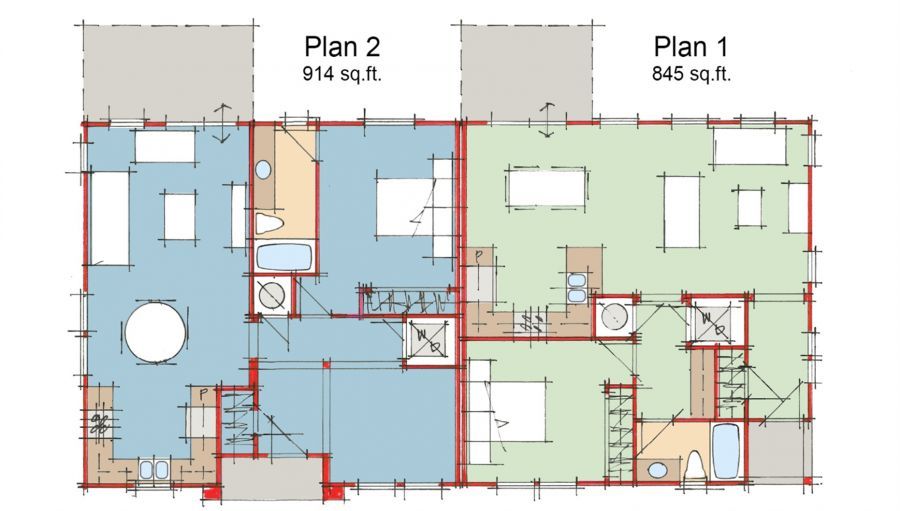Original article by: BSB Design / By Rick Henry
Renters by choice and rising home prices are paving a golden path of opportunity for this market segment.

More and more builders, developers and investors are reevaluating their multifamily properties to ensure they can create the most profitable housing options based on changing market conditions. Rising to the top of their consideration is single family built for rent. Two years ago, we weren’t sure if all the press this asset class was receiving was actually warranted. But as we kick off 2021, it’s clear single family for rent is here to stay and has now emerged as a viable, profitable option across the country.
Here on the West Coast, most of our SFBFR work has been in middle density new construction, but our design teams across the country are involved in a wide variety of projects, including small infill and even luxury detached product. The possibilities are pretty much endless.
For the homebuilding industry, this opens up some interesting opportunities. Builders, developers, investors and even trades should be looking for strategic partnerships that can help them cash in on the momentum of single family built for rent. Over the past 18 months or so, we at BSB Design have enjoyed a unique perspective at the heart of those partnerships, learning a bit about what everyone at the table needs in order to make a new SFBFR project successful. Here are a few things we’ve learned:
Consumer Knowledge
The homebuilding industry knows what sells and what doesn’t. Although SFR can be a different animal than for sale homes, a good floor plan will still make or break the deal. New SFR project teams should lean on the lessons the homebuilding industry has learned from decades of building for sale product. That way, SFR homes can offer the kind of lifestyle opportunities that will warrant premium rents. And since the square footages are typically compressed (we’re designing most SFR product in the 600 to 1,100 sq.ft. range right now), good plan design is crucial to make sure those small spaces still feel great.

Communities of detached villas (often called “horizontal apartments”) are under development throughout the Phoenix metro region.
Construction Process & Efficiency
Every potential opportunity in the SFBFR space starts on the spreadsheet, and hard construction cost is the first variable that needs to be effectively managed in order to drive profitability. Luckily, the homebuilding industry is filled with builders, developers, general contractors and trade partners who are already experts at hitting productivity and budgetary benchmarks. A project team that truly understands construction efficiencies will make sure architecture is on target right from the start. That way, value engineering becomes an objective process to simplify the building without detracting from design.

Simple building designs create construction efficiencies and consistency, a real win for contractors and trades.
Once it pencils out, going vertical at the SFBFR job site has its own unique challenges. But building houses isn’t one of them. SFBFR builds require the exact same construction skill set as for sale homes, with the exact same set of trade partners performing the exact same kind of skilled labor. But the real key to a successful SFBFR partnership is the team’s ability to deliver completed phases at scale and in timeframes that are typically much more aggressive than for sale developments. In the SFBFR space, newly built homes need to be renting while future phases are under construction, and this can be a tricky balancing act.
